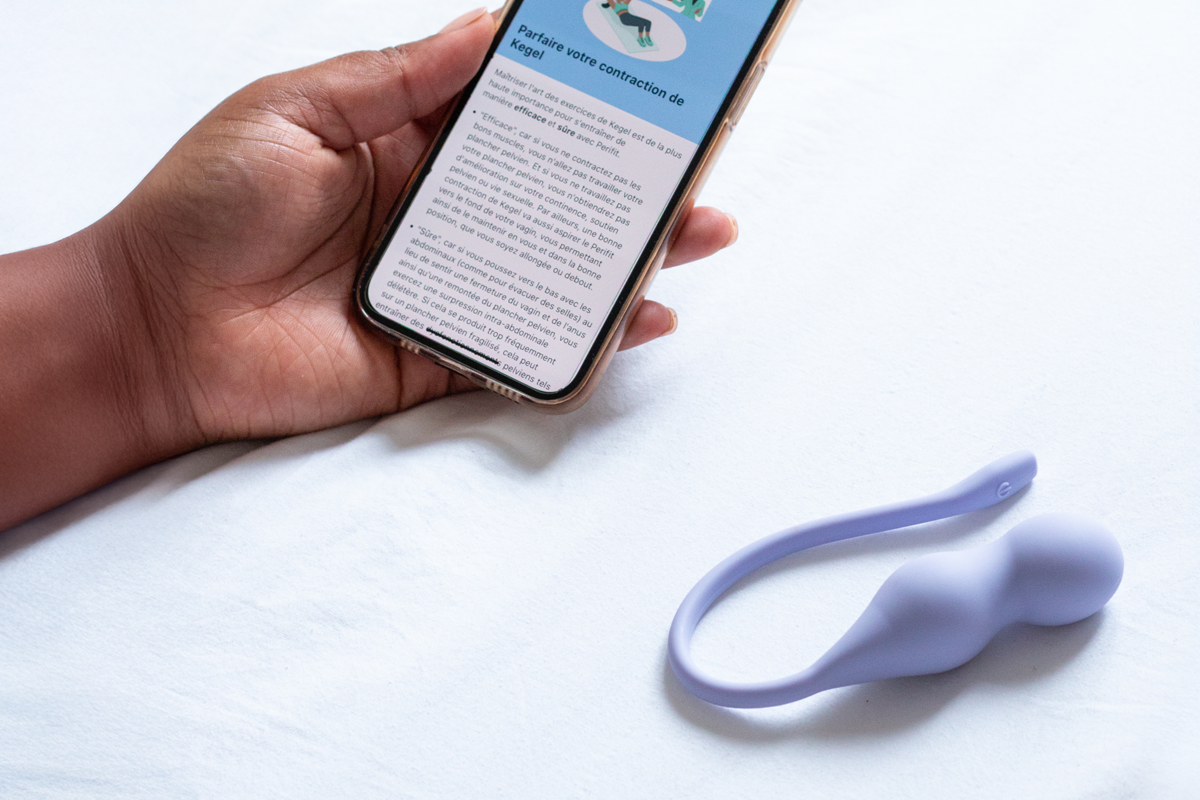Curious about your Kegel progress? You're not alone in wondering how long it takes for Kegels to show results and how to tell if those pelvic floor exercises are actually making a difference. After all, it's not like you can see your muscles getting stronger in the mirror. But don't worry – there are ways to gauge your Kegel success. From subtle physical changes to noticeable improvements in daily life, your body will give you clues that your efforts are paying off. Let's explore the signs that indicate your pelvic floor is getting stronger, so you can feel confident you're on the right track. With a little patience and the right approach, you'll soon be celebrating your Kegel victories.
Signs that Kegel exercises are working
Improved bladder control
One of the most noticeable signs that your Kegel exercises are working is improved bladder control. You may experience fewer accidental urine leaks related to coughing and incontinence, sneezing, or exercise, showing that your pelvic floor muscles are getting stronger.
Additionally, you might notice a reduced urge to urinate frequently. As your pelvic floor muscles strengthen, you'll likely feel more in control of your bladder and bowel functions. This increased control can lead to fewer trips to the bathroom and improved quality of life.
Stronger pelvic muscle engagement
Another sign that your Kegels are effective is the ability to perform the exercises more easily and for longer durations. Being able to hold a Kegel contraction for longer periods is a positive indicator. Initially, you might only manage to hold for a few seconds, but with consistent practice, you should be able to maintain the contraction for 5-10 seconds or more.
You may also notice that you can more easily identify and isolate your pelvic floor muscles during exercise. This improved muscle awareness and control is a clear sign that your Kegel exercises are working as intended.
Enhanced sexual function
Kegel exercises can also lead to improvements in sexual function. As your pelvic floor muscles become stronger, you might experience increased sensation during sexual activity and better control, which may help reduce issues like peeing while having sex. Kegel exercises can help strengthen the muscles that support the vagina, potentially leading to enhanced sexual pleasure.
For people with penises, Kegel exercises may help improve erectile function and ejaculatory control.
💡 These benefits can contribute to a more satisfying sexual experience for both you and your partner.
Reduced pelvic pain or pressure
As your pelvic floor muscles strengthen, you may notice a decrease in pelvic pain or pressure. This is particularly relevant for those who have experienced pelvic organ prolapse, pelvic pain after running, pain during intercourse or weakening of the pelvic floor muscles after childbirth.
💡 The reduction in discomfort is a positive sign that your Kegel exercises are working to support your pelvic organs more effectively.
It's important to note that consistency is key when doing Kegel exercises. Even just one set per day can be beneficial if done regularly. Most people start to notice improvements in their symptoms after 6-8 weeks of consistent practice.
However, it's also crucial to listen to your body and watch for signs of overdoing Kegels, such as pelvic discomfort, increased urinary urgency, or difficulty relaxing your muscles.
How to track your Kegel progress?
Tracking progress is essential when it comes to Kegel exercises. By monitoring your improvements, you can stay motivated and ensure you're on the right path. Here are some effective ways to assess if your Kegels are working:
Self-assessment techniques
One of the simplest ways to know if Kegels are working is through self-assessment. Pay attention to changes in your daily life, such as:
- Fewer episodes of urinary leakage
- Improved control during sudden movements like coughing or sneezing
- Enhanced sensation during sexual activities
If you make Kegel exercises a regular part of your routine, you can expect to see results within a few weeks to a few months.
💡 Consistency is key - aim for 3 sets of 10-15 repetitions daily.
Using biofeedback devices
For more precise tracking, biofeedback for pelvic floor devices can be incredibly helpful. These tools provide real-time feedback on your pelvic floor muscle contractions, helping you ensure you're targeting the right muscles and making progress over time.
Perifit Care, for example, uses innovative technology to gamify your Kegel exercises. The device connects to a smartphone app, allowing you to visualize your muscle contractions as you play engaging games. This not only makes tracking progress more fun but also helps maintain motivation for regular practice.
In the app, you’ll find a Contraction Quality Meter. This feature tracks your Kegel contractions in real time and lets you know if you’re using too much intra-abdominal pressure. That way, your training stays both safe and effective.
For every contraction you do, Perifit Care gives you a quality score:
- Excellent! (green): Your pelvic floor contraction (measured by the superficial sensor) is strong, while intra-abdominal pressure (deep sensor) stays low.
- OK (orange): Your intra-abdominal pressure is almost as strong as your pelvic floor contraction.
- You can do better (red): Your intra-abdominal pressure is stronger than your pelvic floor contraction—this often happens when you cough, laugh, or push.
Measuring improvement with Perifit
To get a more comprehensive picture of your progress, consider the following metrics:
- Strength: Can you hold contractions for longer periods?
- Endurance: Are you able to perform more repetitions before fatigue sets in?
- Coordination: Can you contract and relax your pelvic floor muscles more quickly and precisely?
Progress may be gradual, but even small improvements can make a big difference in your quality of life.
With Perifit, you can track these improvements directly through the app while having fun with interactive games designed for each goal:
- Top games for Endurance: Flappy Bird, Golden Lotus, Under the Sea
- Top games for Strength: Moving Out, Sacred Lotus, Concentric, Space Odyssey, Cloud Gate
If you're unsure about your technique or progress, don't hesitate to consult a pelvic health specialist. They can provide personalized guidance and use professional tools to assess your pelvic floor function more accurately.
What to do if you don't see results?
Reassess your technique
If you've been doing Kegel exercises consistently but aren't seeing results, it's important to first ensure you're performing them correctly. Many people initially have trouble isolating the right muscles.
To check your technique, try stopping your urine flow midstream - the muscles you use to do this are your pelvic floor muscles. Once identified, practice contracting these muscles while keeping your abdomen, thighs, and buttocks relaxed.
Increase intensity and consistency
If your technique is correct but you're still not seeing improvement, consider ramping up your routine. A common regimen of 3 sets of 8-12 contractions, held for 8-10 seconds each, performed 3 times daily for at least 15-20 weeks.
Gradually increase the duration and frequency of your exercises, always listening to your body to avoid overexertion.
Explore resistance training
For those wondering how to know if Kegels are working, adding resistance might help. Using a compressible resistive load during pelvic floor exercises can effectively induce muscle fatigue - a key factor in strengthening.
💡 Consider devices like Perifit, which offer resistance and gamification to make exercises more engaging and effective.
Be patient and consistent
Seeing results from Kegel exercises takes time. A real-world analysis of over 6,000 women (3) using the Perifit device showed that significant improvements in urinary incontinence symptoms were observed after about 6 weeks of consistent use, with further improvements at 2 and 4 months.
Stick with your routine and track your progress over several weeks or months before concluding whether the exercises are working for you.
Progress takes time, but staying consistent will lead to noticeable improvements in your pelvic floor strength. Pay attention to those subtle changes in bladder control, sensation during intimacy, and overall pelvic awareness. If you're still unsure, don't hesitate to check in with a pelvic health specialist for personalized guidance. Keep up the great work - your body will thank you! With patience and persistence, you'll be on your way to a stronger pelvic floor and all the amazing benefits that come with it.
Sources:





